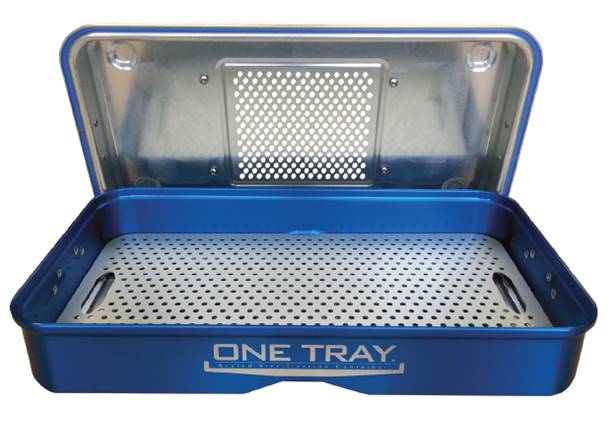Patient safety is fundamental, but it’s also complicated. Much as healthcare professionals would like prevention of surgical site infections (SSIs) and similar complications to be a straightforward, settled process, there are always challenges.
Especially as mounting fiscal constraints mandate every member of the staff take institutionalized efficiencies into account in their decision-making, it’s vitally important to keep pursuing new options. Care can never be compromised, but maybe it can be improved.
Of course, product manufacturers have an entirely different motivation when it comes to discovering that next generation of infection control. Innovation Sterilization Technologies believe they’ve hit upon an important step forward with their One Tray technology.
One Tray, which was honored in the Surgical Products 2014 ESP Awards, is a sealed sterilization container that promises a better methodology for processing surgical instruments and supplies.
Mike Faulkner, the president of sales at Innovative Sterilization Technologies, notes the processing expediency of the product is one of its key benefits.
“One Tray is the only sterilization vehicle — including rigid container or blue wrap — that provides one standard of care for every patient, by providing terminal sterilization in approximately 20 minutes, post-decontamination,” Faulkner points out. “All other sterilization containers and wraps require over two hours, post-decontamination, for terminal sterilization.”

(Image credit: Innovative Sterilization Technologies)
According to Faulkner, facilities using One Tray are able to cut costs through reduced energy and water consumption, and simply by sterilizing more trays in a shorter period of time. Moving away from blue wrap also eliminates related issues, such as delays triggered by torn or wet material.
In a written testimonial, Robert C. Marchard, MD, asserts the adoption of One Tray has made a significant difference for him and his facility, South County Hospital, in Rhode Island.
“Due to the efficiencies with this system my surgical days have moved along much more quickly and without delays,” Marchand reports. “Before using One Tray I would typically end a busy surgical day around 8:00 or 9:00 p.m. Now I leave the hospital around 5:30 to 6:00 p.m., which makes my job as a surgeon and a parent much easier. On some occasions I even have the option of adding another case to my schedule because of the extra time I have.”
The product benefits hospital’s bottom lines, but it also helps alleviate the mounting problem of physician burn-out. As Faulkner notes, increased efficiency sees to that.
“By eliminating delayed cases caused by wet packs, torn wraps, and dropped instrumentation, One Tray gets healthcare professionals home to their families sooner,” he says.
A version of this story appeared in the November/December issue of Surgical Products.




